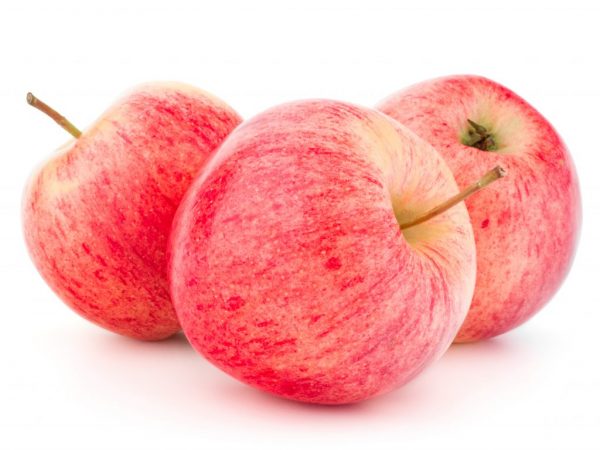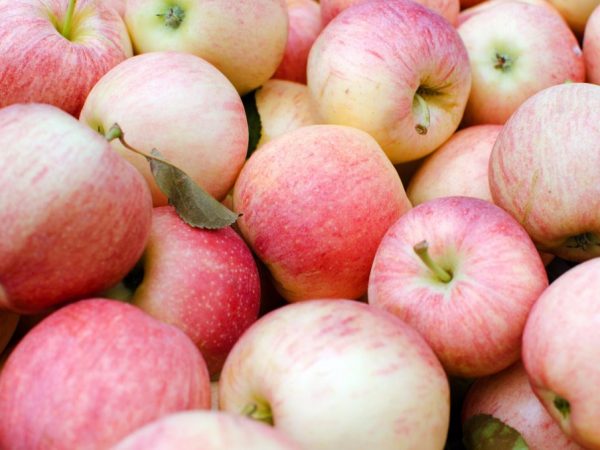Varietal description of the Bolotovskoe apple tree
The Bolotovskoe apple tree has been pleasing gardeners for over 40 years. Everyone fell in love with her for rich harvests, high immunity to diseases and parasites, distinctive sweetness and absolute ease of care.
- Variety characteristic
- Description of the tree
- Description of fruits
- Dignity
- disadvantages
- Taste characteristic
- Chemical composition
- Yield
- Pollinator varieties
- Winter hardiness
- Pest and disease resistance
- Growing regions
- Tree lifespan
- Planting an apple tree
- Landing dates
- Landing technology
- Care
- Features of ripening and fruiting
- Harvesting and storage
- Which stock to choose
- Gardeners' reviews about this variety

Varietal description of the Bolotovskoe apple tree
The variety can be attributed to early winter. It was bred by breeders of Russia in 1977, during the synthesis of Skryzhapel and No. 1984. He successfully passed a number of tests and was entered in the state register.
Variety characteristic
The tree is tall. On a seed stock, its growth reaches 10 m. On a dwarf rootstock, it is 2 times less.
The Bolotovskoe apple tree has a round crown shape, the branches are sparsely, the tree grows, but its density does not increase, this significantly reduces the frequency of pruning, given that this process is rather complicated due to the height of the tree.
The bark is smooth and uniform, the color of the trunk is dark in the southern part, and light green in the northern part.
Description of the tree
The tree has an intense growth rate, it is quite tall, with an elliptical bush.
The trunk is smooth and light. The leaves are dark green, can be different: large and medium, long, pointed. The veins on the leaves are clearly defined, the petiole is thick.
During flowering, pink buds appear, the petals are light, almost white, round. The anther rises in height above the petals for better pollination. The buds have a long peduncle.
Description of fruits
According to the description, the Bolotovskoe Apple is rather large, turnip-shaped. The peel is smooth, but dull, not covered with natural wax.
When fully ripe, the color of the apple is green, with shades of yellow, red blotches or stripes may be present. The pulp is firm, sweet and sour. The fruits are stored until the end of winter.
Dignity
- scab resistance;
- fertility;
- resistance to low temperatures;
- pleasant taste and appearance;
- the apple is stored for a long time.
disadvantages
- the height of the tree is complicated by the harvest;
- seedlings begin to bear fruit after 7 years;
- discharge of ripe fruits.
Taste characteristic
The taste of the apple pulp may differ slightly from the usual one, but nevertheless it is very tasty, sweet and sour. The juice is 70%.
Chemical composition

The apple tree gives an excellent harvest
The Bolotovskoe apple tree has a high consumer demand, this variety has been carefully studied by breeders.
As part of the fruit:
- 10% sucrose;
- 0.3 acids;
- 14 mg ascorbic acid;
- 17% pectin.
Yield
Yields peak in September. Experienced gardeners know that this variety sheds ripe fruits, so do not delay the collection.
Young trees begin to bear fruit at the age of 7.
Fruiting is good: you can pick up to 100 kg of apples.
With proper care and climate, it bears fruit in large quantities, but if there is heavy rainfall or frost during flowering, the crop will be threatened, its amount will decrease significantly.
Pollinator varieties
The tree belongs to the type of self-fertile varieties, so it is extremely important to plant pollinators next to it. They will be able to raise the level of the harvest and delight with fruiting all year round.
Pollinators:
- Antonovka;
- Orlik;
- Cinnamon.
Winter hardiness
The Bolotovskoe apple variety tolerates winter and frost well. Seedlings are accepted equally well in September and April.
Trees do not tolerate high humidity, so it is important that after winter, when the snow begins to melt, there is no stagnation of water.
To do this, it is recommended to plant apple trees on hills and take into account the location of groundwater - their depth should be at least 2 m.
Pest and disease resistance
These trees are renowned for the highest scab resistance, but are not immune to other parasites. They can suffer from powdery mildew, black cancer, milky shine and suffer from fruit rot.
There is no better remedy for powdery mildew than Topaz. Processing must be carried out in 3 stages:
- when leaves are formed;
- at the end of flowering;
- after harvest.
A solution of 100 g of copper sulfate and 150 g of quicklime diluted in 10 liters of water will also work. The procedure is carried out according to the instructions.
Fruit rot is treated with Hom: dilute 40 g in 10 liters of water.
So that the tree does not hurt with a milky sheen, it is enough to feed it in time, make sure that the soil contains all the necessary trace elements and minerals for growth, and when pruning branches, it is imperative to cover the cuts with garden pitch. You can also whitewash the barrel.
Growing regions
Apple trees grow quite well in the south and center of Russia. The climate near Moscow is more suitable for wood. Taking into account the resistance to low temperatures, cultivation is possible in the north of the country.
Tree lifespan
These trees have a long lifespan. On average, it can live and bear fruit for 40-60 years.
Planting an apple tree
Landing dates
The best time for planting is spring. When the snow melts, the earth warms up, and this happens in April-May, you can safely take up the landing.
If you want to plant a tree in the fall, you need to have time to do it before the onset of frost.
In summer, you can also plant, but it is better to buy a seedling with closed roots.
If you plan to vaccinate in the spring, the pit needs to be prepared in the fall. Be sure to check the proximity of groundwater - create a hill if necessary.
Landing technology
The Bolotovskoe apple tree is well grafted in chernozems. Young one-year-old trees are best suited for planting.
Buying a biennial tree, you can injure its roots when digging, and this is fraught with long grafting to a new place.
Selling in pots or boxes is successfully practiced, because the root systems in this case will be closed and safe from injury.
The pit is prepared as follows:
- dig a hole 60x60 cm in size;
- a rack is driven into the ground;
- distribute the roots of the seedling;
- cover the primordium with earth;
- fix the apple tree on the rack;
- watering.
Care

With proper care, the fruits will not keep you waiting
Regular furrowing of the soil, destruction of weeds is the primary task of the gardener in the first time after planting the seedling.
In the spring, it is imperative to fertilize: you will need 20 g of nitroammophoska and 200 g of wood ash for each tree.
Remember to water abundantly during flowering. To make the tree less crumbling, dissolve superphosphate and calcium chloride (20 g per bucket of water) and pour it under each tree.
Prune the crown every 3 years, do it in March. Sick, dry and thin branches are an exception.
Features of ripening and fruiting
Trees are fast-growing, because the first fruits appear already 4 years after vaccination.
If the seedlings are on a dwarf rootstock, you can expect a harvest in 2 years.
Columnar Bolotovskie apple trees will delight with fruits the next year after planting.
Apples are classified as early winter. You can collect and use them in September, but if you let them lie down for a month, they will pick up sweets and become much softer.
Harvesting and storage
Based on the description, it becomes clear that the harvest is in early autumn. You need to have time to pick the apples before the tree starts dropping them. Fallen fruits are often used for homemade preparations, drying, and jam.
The yield in the early years may be weak, but it is increasing. So, if in the first seasons the gardener receives 80 kg of apples, then after a couple of years the maximum fertility reaches 200 kg.
It is possible to store apples until the end of February. It is enough to place the fruits in wooden boxes, cover them with hay or paper and leave them in the cellar or on the balcony. The storage temperature should be close to 0 °.
Which stock to choose
There are several types of rootstocks for planting:
- medium-sized;
- semi-dwarf;
- dwarf.
They differ in that on medium-sized seedlings a high level of development is noted, trees can reach 6 m in height. On a semi-dwarf - up to 5 m, and on a dwarf - 3 m.
Gardeners' reviews about this variety
Gardeners unanimously came to the conclusion that this Bolotovskoe variety can be attributed to the classic, successful and fertile.
It fully corresponds to its description: it is absolutely picky and easy to care for, and is also rich in yields and fruit sizes. He will become a decoration of the garden and a favorite of the gardener.

